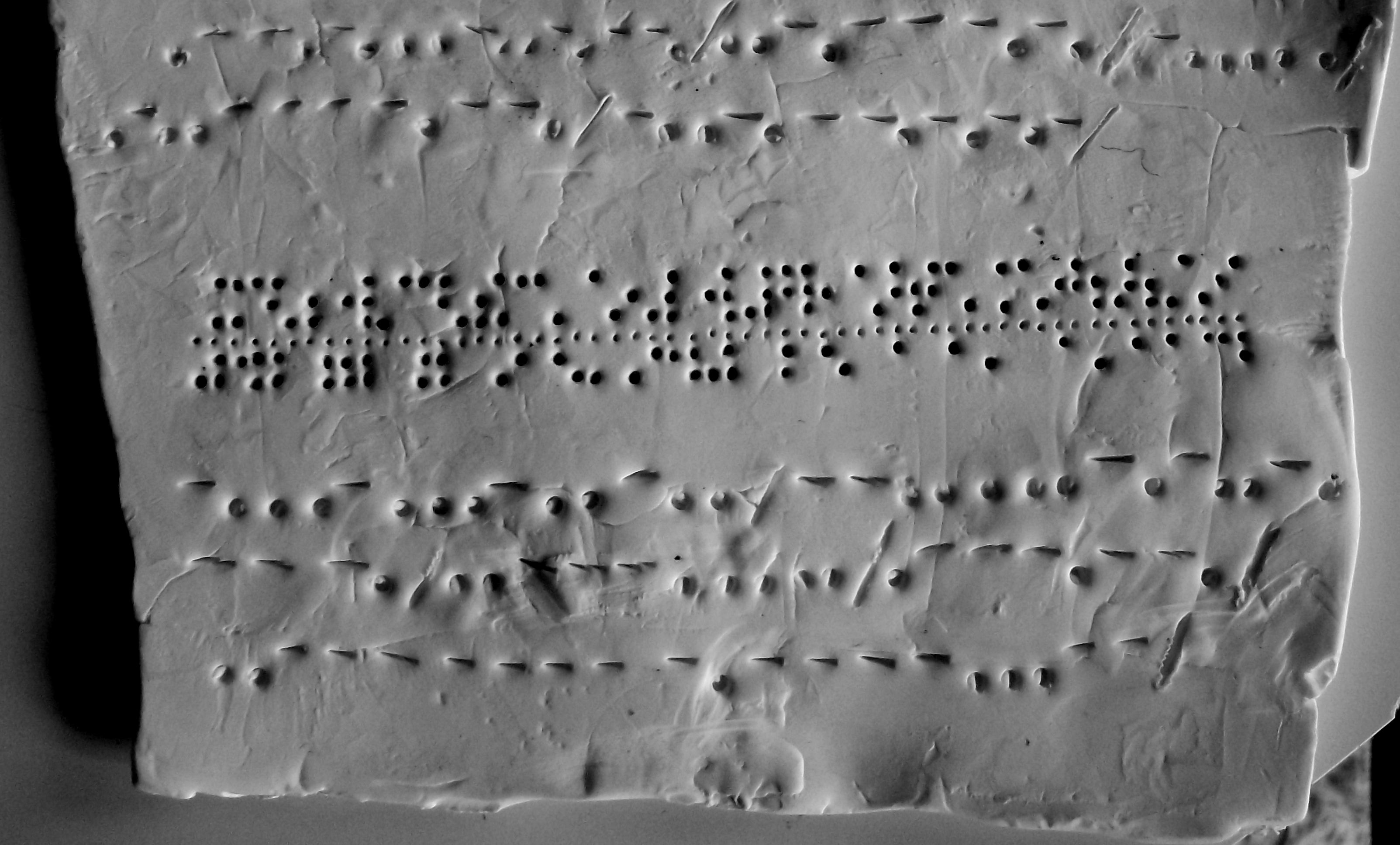
There are few means of storing information where we have good evidence that they will last into the seriously long term (by which I mean archaeological time scales). We have examples of inscriptions made in stone and clay which are still readable up to six thousand years after they were carved or written. Paper and its like (papyrus, parchment) has survived several thousand years.
This poses challenges when thinking about digital archiving where we are deeply uncertain about the storage media we use.
To test this I have made a clay tablet with some digital information encoded which for fun I am making available as a photograph with the English text removed.

first a confession. Strictly it is a replica or analogue of
a clay tablet made with synthetic oven hardened modelling clay (Fimo)
whose longevity is not known in the serious long term.
I used online
services to produce a morse code and a punch tape translation of my
English text. I placed the punch tape in the middle of the table and
punched through the printout with a cocktail stick to produce
indentations in the clay. The morse I wrote freehand but had not left
enough space so I wrapped the morse round the punch tape version. As you
can see I did not attempt to make a perfectly smooth surface or a
perfectly rectangular tablet. This makes the freehand morse (and the
English) harder to read but is, I think, a better analogue for the six
thousand year old examples. I have tweaked the contrast of the
photograph to make it easier to read.
Finally I was pleased to see Clay
included in the collaborative list of file formats:
http://fileformats.archiveteam.org/wiki/Clay_tablets
David Zeitlyn 9 March 2013